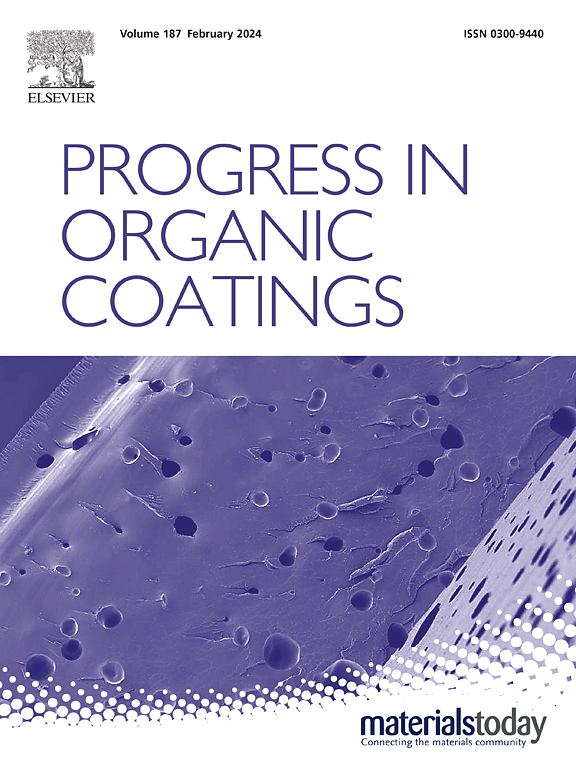Sustainable photothermal-responsive anti-corrosion nanocomposite coating with distinguished self-healing performance and ultrahigh mechanical properties
IF 6.5
2区 材料科学
Q1 CHEMISTRY, APPLIED
引用次数: 0
Abstract
Intelligent self-healing corrosion protection materials with photothermal-responsive performance have become a research hotspot with the gradual attention of people to the problem of corrosion of metal materials, while it is still challenging to impart simultaneously exceptional self-healing abilities and ultrahigh mechanical capabilities to materials. Herein, the dynamic bonds including hydrogen and oxime urethane bonds were introduced to the bio-based polyurethane (PU) by using photothermal-responsive chain extender 1,4-benzoquinone dioxime (QDO) and bio-based chain extender 2,5-tetrahydrofurandimethanol (THFDM), ecologically friendly halloysite nanotube modified by ferric ion and tannic acid (TA/Fe3+@HNT) was further incorporated to the PU polymer to form abundant interfacial hydrogen bonds. The nanocomposite material possesses strong tensile strength (64.4 MPa), distinguished toughness (785.5 MJ m−3), and efficient self-repairing properties (92.0 %, healing for 24 h at 35 °C). Moreover, the temperature of the material rises rapidly to 100.2 °C after irradiating for 90 s under near-infrared (NIR) light, which imparts shape memory properties and a more efficient self-healing performance (98.2 %, irradiating for 30 min) to the material. Meanwhile, the high coating's impedance modulus at 0.01 Hz (4.25 × 108 Ω cm2) in 3.5 wt% NaCl solution with 45 days of soaking demonstrates its excellent long-lasting corrosive resistance. Hence, our work provides a straightforward and feasible method to fabricate high-performing photothermal-responsive self-healing PU nanocomposite that can be applied to long-term corrosion protection of metal materials.

求助全文
约1分钟内获得全文
求助全文
来源期刊

Progress in Organic Coatings
工程技术-材料科学:膜
CiteScore
11.40
自引率
15.20%
发文量
577
审稿时长
48 days
期刊介绍:
The aim of this international journal is to analyse and publicise the progress and current state of knowledge in the field of organic coatings and related materials. The Editors and the Editorial Board members will solicit both review and research papers from academic and industrial scientists who are actively engaged in research and development or, in the case of review papers, have extensive experience in the subject to be reviewed. Unsolicited manuscripts will be accepted if they meet the journal''s requirements. The journal publishes papers dealing with such subjects as:
• Chemical, physical and technological properties of organic coatings and related materials
• Problems and methods of preparation, manufacture and application of these materials
• Performance, testing and analysis.
 求助内容:
求助内容: 应助结果提醒方式:
应助结果提醒方式:


